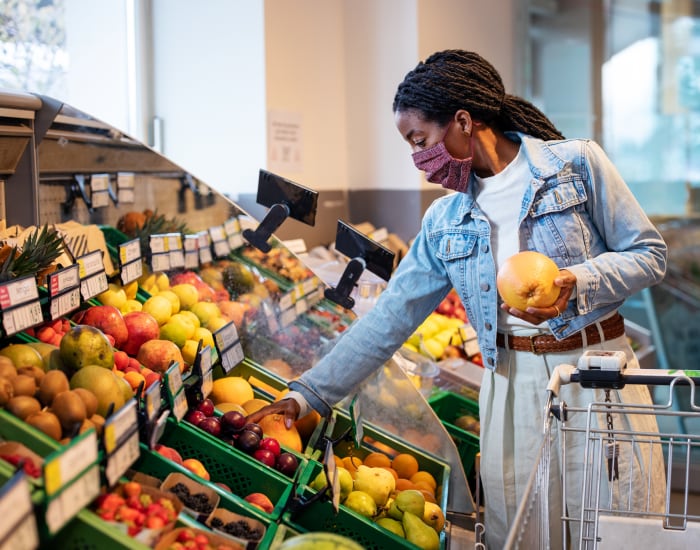One in five people in the UK are living in poverty.
In response to the energy crisis, the government is lifting the cap on energy prices by 12% from today (1 October). At the same time, food prices are also increasing due to rising commodity markets and higher packaging and transportation costs. These inflationary pressures will hit the poorest hardest.
Advocacy group the Food Foundation says that spiking fuel and food prices mean people are going to have to choose between ‘eating and heating’ in the coming months. This will likely be worse for households with children, the organisation warned.
Inflationary pressures are being added to household budgets at a time when income for many of the UK’s poorest families will fall due to the end of the furlough scheme, which provided support through COVID-19, and a £20 cut in Universal Credit.
The Joseph Rowntree Foundation estimates that for a couple with two children earning less than £20k annually and on Universal Credit, they will be approximately £130 worse off per month with the combined effects of the price increases and the cut in Universal Credit. This is the same amount that an average individual in the poorest 10% of households spends on their entire monthly food and drink budget.
Pricing people out of a healthy diet
Food insecurity should be viewed in the context of its impact on public health. Food Foundation data show 55% of households with children are worried their children’s health and wellbeing will be affected because they can’t afford their energy and food bills.
“We need the Government to get ahead of this crisis before winter sets in when the consequences become much more serious," Anna Taylor, Executive Director of Food Foundation said. "Government needs to... establish a minimum nutritional safety net so that at risk children get at least one decent meal a day.”
Food Foundation is backing the new #WriteNow campaign launched by Marcus Rashford. The footballer - and child hunger campaigner - is calling on the Government to end child food poverty by expanding free school meals eligibility to under 18s from households earning under £20,000; providing long-term funding for an expanded holiday meals and activity programme; and expanding the Healthy Start initiative to all households earning less than £20,000.
But food insecurity isn't just about hunger in the UK, where approximately two in three adults are overweight or obese. How are food insecurity and obesity linked? The answer lies in the price disparity between healthy and unhealthy food.
A new review paper from researchers at Ulster University Business School set out to understand what it costs to eat a healthy diet and unpick the role that promotions play in shaping how we eat.
Sinéad Furey, the research’s author and Lecturer in Consumer Management and Food Innovation at Ulster University, told FoodNavigator that lower income households in the UK spend a higher proportion of their total expenditure on food and non-alcoholic drinks: 14% compared to 8% according to the Office for National Statistics. But data from Safefood, the Consumer Council for Northern Ireland and Food Standards Agency in NI shows that for low-income families in Northern Ireland to afford a healthy food basket, they would have to spend up to 46% of their weekly income.
Eating a healthy diet is more expensive, effectively pricing the poorest in society out of access to good nutrition.
Identifying the biggest barriers, Furey said the ‘rising cost of living, low income, unemployment, indebtedness and product unavailability are all obstacles to affording a healthy diet’.
The role of promotions in access to nutrition
The food industry's promotional activity plays an important role in shaping what we eat, the paper found.
“Price promotions appear to increase consumer food purchases and are applied more frequently to less healthy products than their healthy counterparts," it concluded.
Pointing to previous research from Laura Martin for NHS Health Scotland, Furey noted products most likely to be discounted through multi-buy promotions are unhealthy foods and that this type of discount drives the greatest increase in sales. Moreover, studies have demonstrated that discretionary foods such as savoury snacks and confectionery were more frequently purchased on promotion compared to the healthier categories such as fruit, vegetables and starchy carbohydrates (50% versus 30%).
In a bid to address the obesity pandemic, the UK Government has said that it is going to restrict marketing, promotion and in-store placement for products that are considered high in fat, sugar and salt.
Volume promotions, such as buy-one-get-one-frees and two-for-one deals, will no longer be allowed for these items. A ban will come into force on HFSS products being placed in secondary promotional locations in stores, such as end of aisle displays, store entrances and checkouts. Marketing of HFSS SKUs will no longer be permitted in digital and pre-watershed TV.
Furey said she supports the restriction of HFSS volume-based promotions and ‘strongly encourages’ other types of promotions – such as price reduction and stand-alone offers – to be looked at.
But restricting the promotion of unhealthy foods still doesn't address the fact that a proportion of the population can't afford healthy and nutritious options. Access to healthy food remains out of reach for the most vulnerable in society.
When Ulster University Business School responded to the UK Consultation on restricting promotions by location and by price, the organisation suggested promotional strategies need to be shifted to support increased consumption of better-for-you products. “When considering the health of consumers’ diets, we believe that it is vital to decide on the definition of a balanced promotional diet. For example, a reasonable health-focused proposal would be that promotions in-store should reflect government recommendations, such as Eatwell Guide,” it said.
This would not only provide an incentive for shoppers to make healthier choices -- for some it could mean that healthy food becomes affordable food.
“We need to ensure the affordability and accessibility of nutritious food,” Furey told us. “Retailers should keep apprised of healthy food basket research in ensuring a balance of promotional activity against popularly purchased products and produce.”
Source
'Food promotions and the cost of a health diet'
Proceedings of the Nutrition Society
Author: Dr Sinéad Furey
DOI: https://doi.org/10.1017/S002966512100286X
(N.B. the primary research was presented at the Nutrition Society Summer Conference, 7 July 2021, ahead of peer-reviewed publication.)




